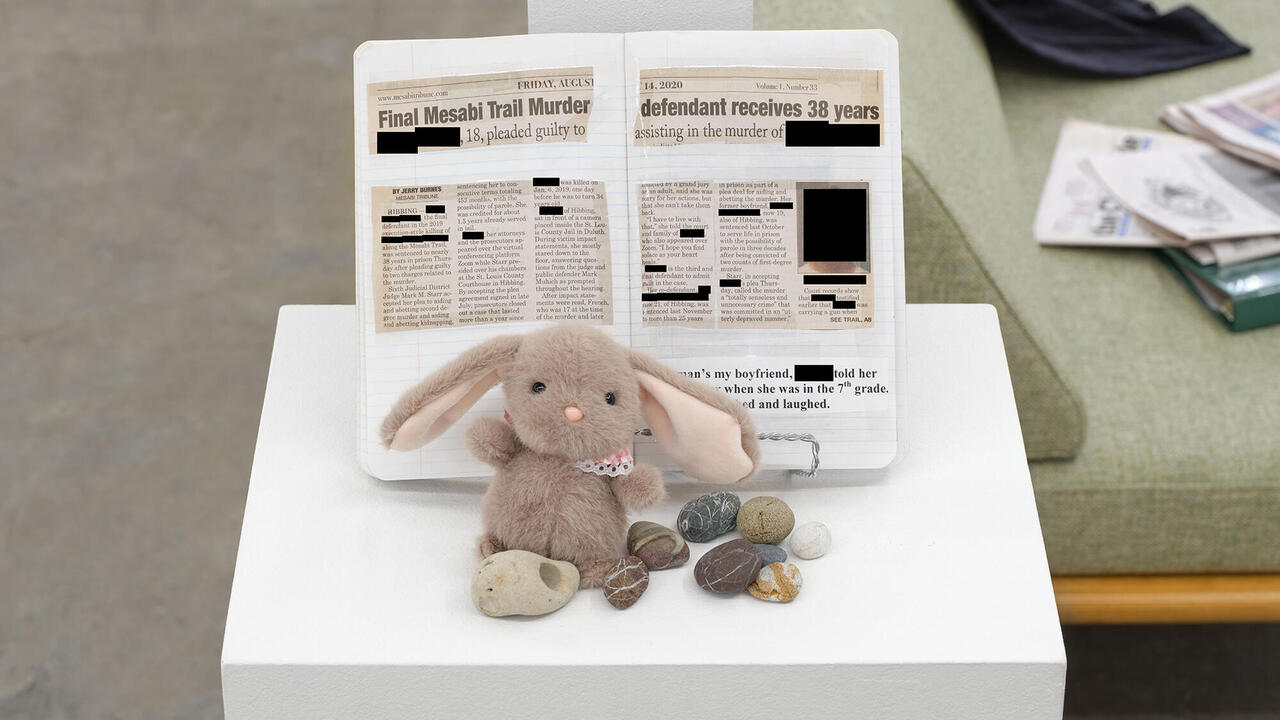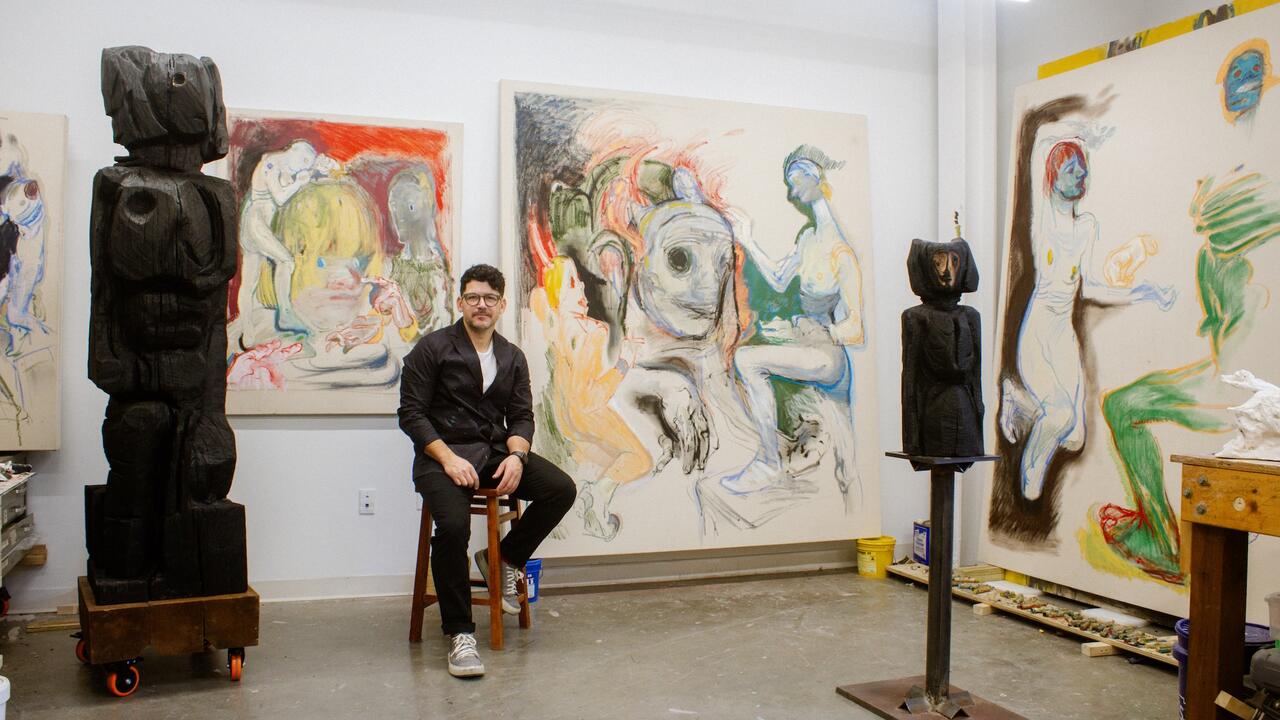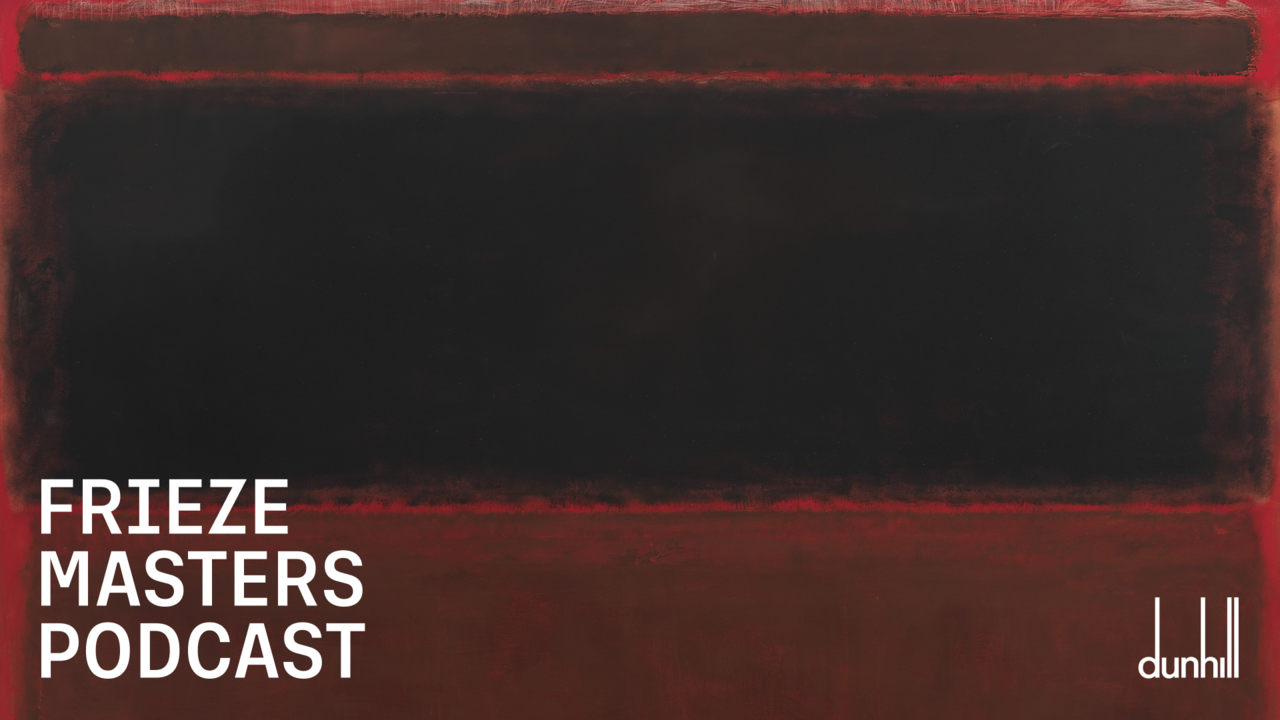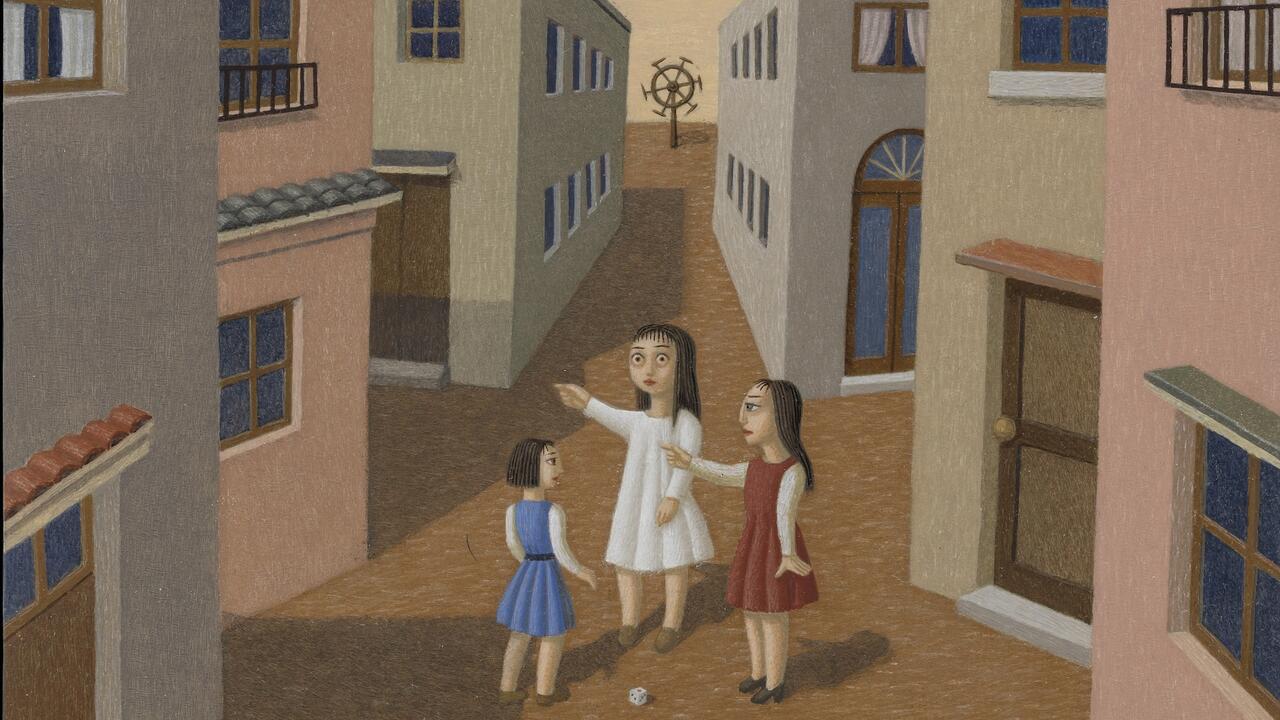Frieze Writer's Prize: Winner Announced
Cal Revely-Calder wins the 2017 prize for his review of Dom Sylvester Houédard's exhibition 'Typestracts'
Cal Revely-Calder wins the 2017 prize for his review of Dom Sylvester Houédard's exhibition 'Typestracts'

frieze is delighted to announce that Cal Revely-Calder has won the 2017 Writer's Prize for his review of Dom Sylvester Houédard's exhibition 'Typestracts', at Richard Saltoun Gallery, London. The runners-up were Hanna Baumann, for her review of Bouchra Khalili at Lisson Gallery, London, and Sharmini Aphrodite, for her review of the Singapore Biennale 2016. This year, the prize was judged by Ed Atkins, Chris Krausand Pablo Larios.
Chris Kraus said of the winning entry: ‘Writing about an exhibition of the ‘Typestracts’ of the Benedictine monk Dom Sylvester Houédard, Cal Revely-Calder captures the look and the feel of Houédard’s obscure, mid 20th-century work. Revely-Calder summons Houédard through the decades. He describes how, perhaps even why, these works were made, and what they transmit to a viewer today.’ Pablo Larios added: ‘Cal Revely-Calder has written a review that is linguistically as well as visually attuned. Entertaining and precise, his entry shows that good art criticism is, above all, written.’
Frieze Writer’s Prize is an annual international award to discover and promote new art critics. The winner is commissioned to write a review that will be published in friezeand is awarded £2,000.
Ed Atkins is an artist and writer based in London and Berlin. Recent and upcoming solo exhibitions in 2017 include MMK, Frankfurt, Germany; Martin Gropius Bau, Berlin, Germany; and DHC/ART, Montreal, Canada. His book A Primer for Cadavers was published in 2016 by Fitzcarraldo Editions.
Chris Kraus is the author of four novels and two books of art and cultural criticism, and a co-editor of Semiotext(e), with Hedi El Kholti and Sylvère Lotringer. Her biography of Kathy Acker will be published in August 2017.
Pablo Larios is a writer and associate editor of frieze magazine. He lives in Berlin.
Dom Sylvester Houédard, 'Typestracts’
Richard Saltoun Gallery, London, UK
26 May – 14 July 2017
Dom Sylvester Houédard was unusual, even for a Benedictine monk. Throughout the '60s and '70s, from a cell in Prinknash Abbey near Gloucester, you’d hear an Olivetti Lettera-22 typewriter clacking deep into the night. At daybreak, the occupant would emerge with a series of off-white A4 sheets, covered in swirling abstract patterns, and precise strings of letters and symbols. He made these works, which became known as ‘typestracts’, by typing stroke by stroke on pages that he moved, manually, fractions at a time. When each one was finished, he would post it to one of his thousands of acquaintances. Outside the Abbey, for all his quietness and modesty, he quickly gained avant-garde cachet. He wore black robes and dark glasses, like a holy architect. His artistic peers called him ‘Syl’, ‘the Dom’, and the name by which he signed his work, ‘dsh’. A Clay Perry photo of him appeared in Vogue. He died at Prinknash in 1992, during his forty-third year of obedient monastic life.
Houédard was a virtuoso of the typewriter; he called it his ‘brush’. Using this device and a variety of parts – fresh ribbons, stencils, coloured ink – he cultivated a preternatural skill at managing the pressure on the keys, and dextrously manipulating his paper. The resulting typestracts, recently exhibited for the first time in forty years at Richard Saltoun Gallery, are accomplished studies in free imagination: they deal in lines, not in directions. Jagged streaks of pale colour intersect with large geometric shapes; rougher inky curls are laid over the top. The interplay of angle and curve makes the whole image seem restlessly dynamic. But though I wanted to say Houédard’s designs resemble blueprints, which in turn would hint at intentions, I could never find a hint of a plan. The typestracts don’t give an internal order to their elements, and there are no clues to interpretation. Houédard wasn’t interested in giving the viewer something to decipher; instead, he and you become ‘co-creators’ of whatever response your attention turns up. At Prinknash, concentration was an end in itself.
There are probably thousands of typestracts out there; frustratingly, we’ve only found a hundred, since nearly everything Houédard made was delivered straight into private hands. The thirty-two on display when I visited Richard Saltoun spanned a decade, from 1962 to 1972, although the calendar seemed of little importance. The typestracts gesture to eternity in how they change so little over time. As if to underline this, the exhibition twisted in circles around the walls of the gallery’s chambers; you had to keep crossing the floor to maintain chronological order. As I drifted around the thirty-two sheets on display, placidly mounted in neat groups of two or three, I noticed elements recurring across the years: the angle of tilt of a wireframe cube, or the transecting planes of a sphere.
Later, Houédard came to show a little quiet wit. At first his pieces were rarely titled, and usually marked with their dates (Typestract 140469), but some of the later ones are called things like jewelled pig, urzeit, and successful cube transplant in honor of chairman mao. I felt like these unlikely titles were comic asides to the viewer, amiably nudging us to drop the intellectual machinery we often foist on abstract art. And it’s true that you don’t need to overthink Houédard’s typestracts. Yes, they contain dense bundles of technical skill, and are the fruit of heavy contemplation, but they present a simplicity of spirit too. Intricate particulars only show up when you study, not when you casually glance, and Houédard was an artist who dwelt in present moments as well as eternities.
So, before leaving, I lingered in the present. Stepping back a few metres, I looked at the typestracts again. From this little distance, their extraordinary finesse became less stupefying; and, unburdened with labels or catalogue fodder, their placement on the warmly-lit walls spoke of openness, unaffection, the elegance of geometry itself. As I left, my final thought was that Houédard’s work might have more to do with pure jouissance than I’d imagined when I entered. I had stopped wanting to understand; instead, I just felt the pleasures of crisp design. It was an impression of serenity.
Cal Revely-Calder





















